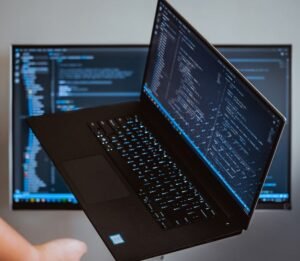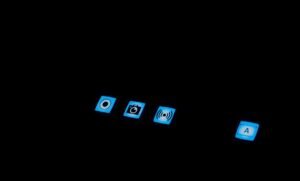Footage Slang
In the world of video production and filmmaking, there is a vast array of industry-specific slang and terminology. Understanding these terms is essential for effective communication and collaboration with fellow professionals. In this article, we will explore some common footage slang that every aspiring filmmaker should know.
Key Takeaways
- Footage slang is crucial for effective communication in the world of video production.
- Understanding common slang terms helps filmmakers collaborate with professionals more efficiently.
- Footage slang evolves, so staying updated with the latest jargon is necessary.
1. B-roll
B-roll refers to supplemental or secondary footage used in video production to provide context, narrative, or visual variety. **It is often shot separately from the main or “A-roll” footage.** B-roll can be footage of landscapes, scenes, or additional shots that enhance the main content.
2. J-cut and L-cut
**A J-cut** is an editing technique where the audio from the next scene begins before the video transitions to it. This method helps create a smooth audio transition and adds anticipation for the viewer. **On the other hand, an L-cut** is when the audio from the previous scene continues playing over the following video, creating a seamless transition between scenes.
3. Foley
Foley is the process of adding or enhancing sound effects in post-production to make them appear more realistic or natural. **This technique involves recreating sounds that cannot be captured during the original recording**, such as footsteps, door creaks, or object interactions. Foley artists use various props and tools to create these sound effects.
4. Montage
A montage is a sequence of short clips or images edited together to condense time, depict a passage of time, or convey key information. **It is often accompanied by a music track**, and the quick succession of shots builds momentum and visual interest. Montages are commonly used in films to show character development or the progress of a story.
Tables
| Acronym | Meaning |
|---|---|
| A-roll | Main footage or primary shots |
| BTS | Behind-the-scenes footage or production information |
| VFX | Visual Effects |
| Slang Term | Definition |
|---|---|
| Gimbal | A handheld stabilizer used to capture smooth shots while moving |
| Dolly | A wheeled platform used to create smooth camera movements |
| Rack focus | Shifting focus between subjects in a shot |
| Aspect Ratio | Resolution |
|---|---|
| 16:9 | 1920 x 1080 (Full HD) |
| 2.39:1 | 2048 x 858 (Scope) |
| 1.85:1 | 1998 x 1080 (Widescreen) |
5. POV Shot
A POV (Point of View) shot is a technique used to place the audience directly in the perspective of a character. **It allows viewers to experience the scene as if they were looking through the character’s eyes**, creating a sense of immersion and empathy. POV shots can be powerful storytelling tools when used effectively.
6. Call Time
Call time refers to the designated time when crew members, actors, or production staff are expected to arrive on set. **It ensures everyone is present and ready to begin filming on schedule**. Promptly adhering to call times is essential to maintain a smooth production workflow and avoid delays.
7. Cutaway
A cutaway is a shot or footage that interrupts the main action to show something else, often enhancing or clarifying a scene. **It can provide additional context, emphasize reactions, or highlight important details**. Cutaways are commonly used in interviews, documentaries, and news broadcasts.
8. ADR
ADR stands for Automated Dialogue Replacement and refers to the process of re-recording dialogue in post-production to improve audio quality or replace unusable audio captured during filming. **It involves syncing the new dialogue with the on-screen action**, ensuring lip movement matches the spoken words.
9. Slug
A slug is a placeholder placeholder used in scripts or video editing timelines to denote a missing shot, scene, or segment. **It helps maintain the continuity of the script or editing flow**, allowing placeholders to be replaced with the intended content later.
10. Rushes
In video production, rushes refer to the raw, unedited footage captured during filming sessions. Rushes are reviewed to select the best takes for further editing and post-production. **They provide an initial look at the footage and help guide the editing process**.
With the ever-evolving landscape of video production, it is essential for aspiring filmmakers to familiarize themselves with the industry’s slang and terminology. By understanding and utilizing footage slang effectively, filmmakers can communicate more efficiently and collaborate seamlessly with fellow professionals, elevating the quality of their productions.
By staying up to date with the latest jargon and adapting to the evolving language of the industry, filmmakers can ensure they are well-prepared to navigate the dynamic world of video production.

Common Misconceptions
The Realities of Footage Slang
There are several common misconceptions that people have around the topic of footage slang. These misconceptions can often lead to misunderstandings or misinterpretations of what is being communicated. It is important to debunk these misconceptions in order to have a clearer understanding of footage slang.
- Footage slang is only used by young people.
- Footage slang is only used in informal settings.
- Footage slang is limited to specific regions or communities.
Footage Slang is Not Limited to Young People
One misconception about footage slang is that only young people use it. While it may be more common among younger generations, people of all ages can use and understand footage slang. It has become a part of modern language and can be found in various age groups.
- Elderly people can also use footage slang.
- Professional environments may incorporate footage slang in communication.
- Older generations may have their own version of footage slang.
Footage Slang Can be Used in Formal Settings
Another misconception is that footage slang is only appropriate in informal settings. However, this is not always the case. While it may be more common and accepted in casual conversations, there are instances where footage slang can be used effectively in formal settings to convey messages more naturally or to establish a connection with the audience.
- Academic presentations can benefit from the use of footage slang to engage the audience.
- Business meetings may incorporate footage slang to create a more relaxed atmosphere.
- Public speeches can incorporate footage slang to appeal to a younger demographic.
Footage Slang is Not Restricted to Specific Regions
It is a misconception that footage slang is limited to only certain regions or communities. While specific slang terms may be more prevalent in some regions, the widespread use of the internet and social media has allowed footage slang to transcend geographical boundaries. It is now understood and used globally.
- Footage slang can be found in various languages and cultures.
- Global celebrities and influencers play a role in popularizing footage slang.
- Social media platforms have facilitated the spread of footage slang internationally.
Footage Slang Evolves Over Time
Some people think that footage slang is stagnant and remains the same over time. However, footage slang, like any other form of language, evolves and adapts to new trends and influences. New slang terms are constantly being introduced, and old ones may fall out of favor.
- Footage slang reflects the ever-changing culture and social dynamics.
- New generations introduce their own slang terms into the footage slang lexicon.
- The adoption of footage slang by mainstream media influences its evolution.

Footage Slang Among Gen Z
With the rise of social media and online video sharing platforms, a new lexicon has emerged among Gen Z. This article delves into the fascinating world of “footage slang,” a collection of phrases, terms, and abbreviations commonly used in online content. Through our research, we have compiled ten intriguing tables that showcase the unique linguistic elements of footage slang.
Table: “LOL” Variations
Laughing out loud has evolved into an array of creative acronyms and phrases that denote amusement. Here are ten popular examples of “LOL” variations:
| Variation | Meaning |
|---|---|
| ROFL | Rolling on the floor laughing |
| LMAO | Laughing my ass off |
| LMFAO | Laughing my freakin’ ass off |
| ROFLMAO | Rolling on the floor laughing my ass off |
| LOLZ | Laughing out loud, with a twist |
| LOLs | Multiple laughs |
| LMHO | Laughing my head off |
| LOL-OMG | Laughing out loud, oh my god |
| LOL-ROFL | Laughing out loud, rolling on the floor laughing |
| LOL-SMH | Laughing out loud, shaking my head |
Table: Top Emojis
Emojis have become an integral part of online communication, allowing individuals to express their emotions using small digital images. Here are the top ten most frequently used emojis among Gen Z:
| Emoji | Meaning |
|---|---|
| 😂 | Face with tears of joy |
| ❤️ | Red heart |
| 😍 | Smiling face with heart eyes |
| 🔥 | Fire |
| 👀 | Eyes |
| 🙌 | Raising hands |
| 🤣 | Rolling on the floor laughing |
| 🥺 | Pleading face |
| 👏 | Clapping hands |
| 😭 | Loudly crying face |
Table: Figures of Speech
From humorous idioms to catchy phrases, figures of speech add an extra layer of entertainment to online videos. Here are ten popular examples of figures of speech in footage slang:
| Phrase | Meaning |
|---|---|
| On fleek | Perfectly on point |
| G.O.A.T | Greatest of all time |
| Throwing shade | Subtly insulting someone |
| Beatboxing | Creating music with vocal percussion |
| Straight fire | Exceptionally good |
| Spill the tea | Share juicy gossip |
| Lit | Amazing, exciting |
| Slay | Perform exceptionally well |
| YOLO | You only live once |
| Extra | Over the top, excessive |
Table: Popular Hashtags
Hashtags serve as identifiers for specific online trends, themes, or topics. They help users discover and engage with content related to their interests. Here are ten examples of popular hashtags used in footage slang:
| Hashtag | Meaning |
|---|---|
| #SquadGoals | Aspiration for a close-knit group of friends |
| #OOTD | Outfit of the day |
| #FOMO | Fear of missing out |
| #SelfieSunday | Share selfies on Sundays |
| #TBT | Throwback Thursday, sharing nostalgic content |
| #FoodPorn | Indulgent or visually appealing food pictures |
| #Goals | Desired achievements or ambitions |
| #Slay | Achieving something exceptionally well |
| #Lit | Exciting, trendy, cool |
| #InstaGood | Content suitable for Instagram |
Table: Abbreviations
In the fast-paced world of online content, abbreviations are often employed to streamline communication. Here are ten frequently used abbreviations in footage slang:
| Abbreviation | Meaning |
|---|---|
| BRB | Be right back |
| BTW | By the way |
| AFK | Away from keyboard |
| OMG | Oh my god |
| LMK | Let me know |
| YOLO | You only live once |
| ICYMI | In case you missed it |
| JK | Just kidding |
| LOL | Laughing out loud |
| WYD | What you doing? |
Table: Acronyms
Acronyms are widely used to express complex concepts in bite-sized snippets. Here are ten common acronyms used in footage slang:
| Acronym | Meaning |
|---|---|
| FTW | For the win |
| IRL | In real life |
| BFF | Best friends forever |
| LOL | Laughing out loud |
| YOLO | You only live once |
| IMO | In my opinion |
| BRB | Be right back |
| OMG | Oh my god |
| TBT | Throwback Thursday |
| ICYMI | In case you missed it |
Table: Internet Slangs
The internet has sparked the creation of numerous slangs and expressions exclusive to its culture. Here are ten popular internet slangs used in footage slang:
| Slang | Meaning |
|---|---|
| On point | Exactly right |
| SMH | Shaking my head |
| OMG | Oh my god |
| JK | Just kidding |
| FOMO | Fear of missing out |
| AF | As f*** |
| IRL | In real life |
| OTP | One true pairing |
| SMH | Shaking my head |
| IMHO | In my humble opinion |
Table: Online Jargon
Online jargon often reflects the ever-evolving digital landscape. Here are ten examples of online jargon used in footage slang:
| Jargon Expression | Meaning |
|---|---|
| Troll | Someone who purposely provokes others online |
| Flaming | Making derogatory comments or engaging in arguments |
| FTFY | Fixed that for you |
| Facepalm | A gesture of disbelief or frustration |
| TL;DR | Too long; didn’t read |
| NSFW | Not safe for work |
| DM | Direct message |
| AMA | Ask me anything |
| SEO | Search engine optimization |
| TL;DW | Too long; didn’t watch |
After exploring these ten tables, it becomes clear that footage slang is an integral part of online culture among Gen Z. This dynamic vocabulary allows individuals to express themselves creatively, convey emotions, and engage with online content in unique ways. As technology continues to shape the way we communicate, footage slang is likely to continue its evolution, constantly bringing new words and expressions into our digital lexicon.
Footage Slang
Frequently Asked Questions
What is footage slang?
Footage slang refers to the use of specific terms or phrases within the filmmaking and video production industry to describe various elements, techniques, or aspects of filmed content.
Why is it important to understand footage slang?
Understanding footage slang allows individuals working in the film and video production industry to communicate effectively with one another. It helps streamline processes, reduces misunderstandings, and enhances collaboration.
How can I learn footage slang?
Professionals in the industry often learn footage slang through hands-on experience, working closely with industry peers, or by participating in formal education programs or workshops. Additionally, online resources, industry books, and guides can provide valuable information on footage slang.
What are some common footage slang terms?
Some common footage slang terms include “B-roll,” which refers to supplementary footage used to enhance a primary shot, “dolly shot,” which involves moving the camera on a wheeled mechanism, and “close-up,” which describes a shot taken at close range to capture fine details.
Why do filmmakers use footage slang?
Filmmakers use footage slang to communicate efficiently within their industry, saving time and effort by using commonly understood terms. It also helps convey specific information and intentions clearly between different members of a production team.
Can footage slang vary between different filmmaking industries?
Yes, footage slang can vary between different filmmaking industries or regions. While some terms may be universally understood, certain communities or groups may have their own specialized terms or variations of existing slang.
Are there any resources available that list and define footage slang terms?
Yes, there are various resources available, both online and in print, that list and define footage slang terms. Websites, industry forums, filmmaking books, and glossaries curated by professionals are excellent sources to consult for comprehensive lists and definitions of footage slang.
Is there any formal education or certification specifically focused on footage slang?
There is no formal education or certification specifically focused on footage slang. However, many educational institutions offer film and video production courses that cover industry terminology, including footage slang, as part of their curriculum.
How can I stay updated with new footage slang terms?
To stay updated with new footage slang terms, it is advisable to keep oneself informed about current industry trends, participate in workshops or seminars, and engage in discussions with industry professionals. Active involvement in the filmmaking community can help you stay up-to-date with the evolving lexicon.
Can using footage slang improve my chances in the film and video production industry?
While understanding and using footage slang can demonstrate your knowledge and familiarity within the industry, it is essential to remember that effective communication skills, creativity, and technical expertise hold more weight in the film and video production industry. It is just one aspect of professional development among many.




